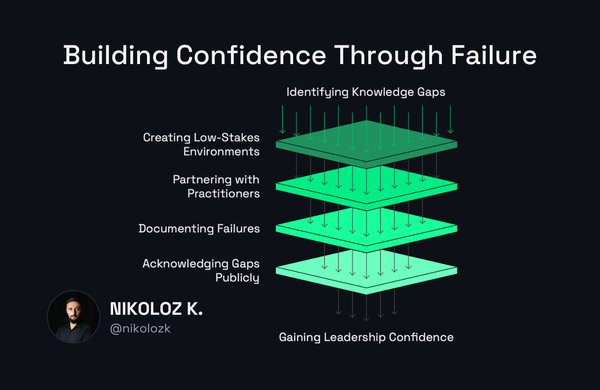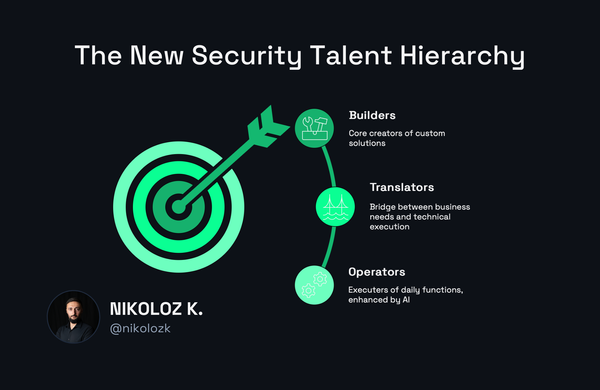Resolve Remote Team Conflicts in 10 Steps: A Leader's Guide

Nikoloz Kokhreidze
Explore effective strategies for conflict resolution. This guide provides a step-by-step approach to foster collaboration and productivity in remote teams.

In today's increasingly remote work environment, leaders face unique challenges when it comes to managing their teams effectively. Conflict resolution is one of the most critical aspects of effective team management, as unresolved conflicts can lead to decreased productivity, low morale, and a toxic work atmosphere. Navigating conflict resolution in a remote setting can be tricky, as the lack of physical presence and non-verbal cues can exacerbate misunderstandings and create barriers to effective communication.
A study conducted by the Harvard Business Review found that remote teams are more likely to experience conflict due to communication barriers and a lack of social bonds (HBR, 2015). Furthermore, experts like Dr. John Paul Lederach, a renowned conflict resolution specialist, emphasize the importance of active listening, empathy, and open communication in resolving conflicts, especially in remote settings (Lederach, 2014).
In this article, I will delve into the importance of conflict resolution in remote teams and explore specific strategies and best practices that leaders can employ to ensure a healthy and productive work environment. I will discuss methods for understanding communication differences in remote work, the significance of physical cues, and a step-by-step guide to resolving conflicts effectively.
By implementing these evidence-based strategies, leaders will be better equipped to foster collaboration and teamwork, even in geographically dispersed teams, ultimately leading to improved performance and organizational success.
Understanding Communication Differences in Remote Work
In a remote workplace, communication differences can be a significant challenge leading to misunderstandings and conflict. As a leader, it's important to be aware of these differences and take steps to mitigate them.
One of the main challenges with remote communication is that tone of voice and body language cannot be easily conveyed over video calls or messaging platforms. This can lead to misinterpretations of intent and a communication breakdown.
To mitigate these challenges, leaders can set clear expectations and establish protocols for communication. This can include guidelines on how to use messaging platforms when to use video calls versus emails, and how to provide feedback effectively. It's also important to encourage active listening and clarify misunderstandings immediately to avoid escalating into more significant conflicts. Additionally, leaders should encourage team members to ask questions and provide feedback constructively and respectfully.
By being aware of the communication challenges and establishing clear communication protocols, leaders can help to reduce misunderstandings and conflicts in a remote workplace. This helps create a positive and productive work environment where team members collaborate effectively.
The Importance of Physical Cues
In a traditional workplace, physical cues such as facial expressions, body language, and tone of voice play a significant role in communication. However, in a remote workplace, these cues are absent, making it difficult to understand the tone of a conversation. As a result, misunderstandings can occur, leading to conflict between team members.
Leaders must enable open and transparent communication in the remote workplace to avoid such misunderstandings. Leaders should encourage their team members to communicate clearly, use simple language, and avoid complex jargon that can lead to confusion. Additionally, it is crucial to create a safe and inclusive environment where team members feel comfortable asking questions and seeking clarification without fear of retribution.
Steps for Resolving Conflict
Based on my experience, miscommunication, misunderstandings, and false impressions about another person's intentions are often the root cause of conflict in a remote workplace. Without the ability to read physical cues and body language, it can be challenging to understand the intent behind someone's words or actions, which can lead to assumptions and misunderstandings.
The following steps a structured and thoughtful approaches to ensure positive outcomes in resolving conflicts or misunderstandings between team members.
1. Set a Clear Agenda
Setting a clear agenda ensures that both individuals are on the same page and know what to expect from the conversation. A clear agenda also allows both parties to prepare adequately, gather their thoughts, and identify any specific concerns or issues they want to address.
When setting an agenda, make sure the purpose of the meeting is stated upfront and the expected outcomes are outlined in detail. Also, include any relevant background information or context that both individuals need to know. This helps provide clarity and context for the discussion, ensuring that both parties completely understand the situation.
You should share the agenda with both individuals before the call to give them time to prepare. This can include asking them to think about specific issues they want to address or preparing any relevant documents or information that may be needed during the conversation. By setting a clear agenda, both individuals can come prepared and ready to engage in a constructive discussion, ultimately leading to a positive resolution.
2. Establish Ground Rules
At the beginning of the call, set some ground rules to ensure a respectful and productive conversation. Encourage active listening, open-mindedness, and constructive feedback. Make it clear that the purpose of the call is to find solutions and improve collaboration, not to blame or criticize. Following ground rules can help ensure that involved parties have a safe space to talk:
- Listen actively: Listening without interrupting helps both parties feel heard and understood. Allowing each other to express themselves entirely makes them less likely to feel dismissed or ignored.
- Speak respectfully: It's important to communicate in a way that is respectful and professional. Personal attacks or derogatory language can escalate the situation and make it more difficult to find a resolution.
- Stay open-minded: Keeping an open mind means being willing to consider the other person's perspective, even if it's different from our own. It's essential to approach the conversation with a willingness to learn and understand rather than a predetermined agenda.
- Provide constructive feedback: Encouraging both parties to provide constructive feedback helps keep the conversation focused on finding solutions rather than pointing fingers. Specific feedback about actions or behaviors can help identify improvement areas without making it personal.
- Stay focused: Getting sidetracked during a conversation is easy, especially if emotions are running high. Encouraging both individuals to stay focused on the agenda ensures that the conversation remains productive and everyone's time is used efficiently.
- Avoid blame: Blaming each other for past mistakes can derail the conversation and make it difficult to move forward. The conversation can stay more productive by focusing on finding solutions rather than assigning blame.
- Confidentiality: Ensuring that any information discussed during the call remains confidential helps to build trust between both parties. It also helps to ensure that everyone feels comfortable sharing their thoughts and opinions without fear of reprisal.
3. Give Each Individual an Opportunity to Speak
Leaders must allow each individual to speak and express their concerns and feelings during the conflict resolution call. This way, both parties communicate their perspective and clarify their understanding of the situation. Encourage each person to focus on specific issues and provide examples rather than making general accusations. This will help to keep the conversation productive and prevent it from devolving into personal attacks or blame games.
As a leader, listening actively and empathetically to both individuals without interrupting or taking sides is crucial. What do I mean by that? Pay attention to the spoken words, emotions, and underlying messages. This can be done by using verbal cues such as nodding or summarizing what was said and asking questions to clarify misunderstandings.
Empathy involves putting oneself in the other person's shoes and understanding their perspective. This doesn't mean agreeing with them but acknowledging their feelings and showing that their point of view is being heard and respected. This can help to de-escalate the situation and create a more positive and productive atmosphere.
By giving each individual an equal opportunity to speak and actively listen to their concerns, the leader can better understand the situation and help facilitate a more effective conflict resolution process.
4. Ask Clarifying Questions
After each individual has presented their views, it's important to ask clarifying questions to ensure that you and the individuals completely understand their perspective. This can help everybody identify the root cause of the problem and provide an accurate assessment of the situation. Additionally, asking clarifying questions demonstrates that they are genuinely interested in resolving the conflict.
Clarifying questions can help you gain a deeper understanding of the situation and encourage both individuals to think more critically about their perspectives.
Some helpful questions might include the following:
- Can you provide an example of when this issue occurred?
- How did this situation make you feel?
- What do you think caused this problem?
- How can we prevent this from happening in the future?
- What specific changes would you like to see moving forward?
Asking these types of questions can help you identify areas of agreement and disagreement, which can be used to facilitate a more constructive conversation. It also allows both individuals to see their concerns and opinions being heard and taken seriously.
5. Identify Common Ground
After each individual has presented their views and you have asked clarifying questions, it's time to identify common ground. This involves finding areas where the two individuals agree or share common goals.
For instance, if two team members are having a disagreement over how to approach a project, you could identify areas where they both agree, such as the importance of meeting the project deadline or the need to deliver high-quality work. By identifying these areas of agreement, you can help the individuals see that they share similar objectives and that they can work together to achieve them.
Focusing on common ground can also help reduce tension and build trust between the two individuals. When people feel that they have common interests and goals, they are more likely to work collaboratively and find solutions that benefit everyone involved.
It's important to note that identifying common ground does not mean ignoring or minimizing areas of disagreement. Rather, it means acknowledging areas of agreement to build a foundation for resolving the issues where there is disagreement.
6. Facilitate Problem-Solving
To facilitate problem-solving, the leader should encourage individuals to brainstorm and suggest possible solutions to address the issues raised. This is an opportunity for colleagues to participate in finding a resolution to the problem, which can help them feel invested in the outcome.
The leader should guide the conversation toward a collaborative problem-solving approach by ensuring that the discussion remains focused on finding solutions rather than past disagreements. Encourage the individuals to focus on the present and future rather than dwelling on the past.
As a leader, you should help the individuals consider each option's pros and cons and explore each solution's potential consequences. Ask them to provide specific examples of how each solution would work and how it could be implemented. This will help to identify the most practical and effective solution for both parties.
Additionally, it would be best to encourage individuals in conflict to work together to find a solution. A collaborative approach can lead to a more satisfactory resolution for both parties and help build trust and strengthen their working relationship. The leader should also be open to other ideas or suggestions that may emerge during the discussion.
Once a potential solution is identified, the leader should encourage the individuals to take ownership of it and agree on specific actions to implement it. This will help to ensure that the solution is implemented effectively and that both parties are committed to its success.
7. Agree on Action Steps
After discussing and agreeing on potential solutions to the issues raised, the next step is to identify specific action steps each individual will take. It's essential to ensure that each action step is specific, measurable, achievable, relevant, and time-bound (SMART). This will help to ensure that the action steps are realistic and achievable.
It's essential to ensure that the actions agreed upon are achievable and realistic, given the resources available. As a leader, you can facilitate this process by asking each individual to identify specific steps they will take to address the issues raised. Encourage them to be specific and provide clear timelines for completion.
Once the actions have been agreed upon, you can set a timeline for implementation and to establish a date for a follow-up meeting to review progress. This will help ensure that the actions are implemented on time and that progress is being made toward resolving the issues.
During the follow-up meeting, review the actions taken and the progress made toward resolving the issues. If necessary, adjustments can be made to the action plan to ensure that progress is being made. It's also important to acknowledge the efforts made by individuals toward resolving the issues and improving collaboration.
8. Encourage Ongoing Communication
Encouraging ongoing communication is essential to maintaining a positive and collaborative work relationship between conflicting individuals. As a leader, it's important to stress that regular check-ins and updates are necessary to ensure progress and address any new issues that may arise.
One way to encourage ongoing communication is to establish regular check-ins or a progress updates system. This can be done through weekly or bi-weekly meetings, email updates, or progress reports. It's essential to ensure that both individuals know the frequency and format of these updates so there is no confusion or miscommunication.
Another way to encourage ongoing communication is to provide both individuals with the necessary tools and resources to collaborate effectively. This may include access to shared project management software, team communication platforms, or other collaborative tools.
It's important to lead by example and model open and honest communication. Always communicate openly and honestly and encourage all team members to reach out to you directly if they have any concerns or issues and respond promptly and respectfully.
By fostering a culture of open communication, you can help to build a stronger and more collaborative team.
9. Close the Meeting on a Positive Note
Closing the meeting on a positive note helps maintain a constructive and collaborative atmosphere. It can reinforce the progress made during the discussion and encourage both individuals to continue working together towards a common goal.
Here are some ways to close the meeting on a positive note:
- Acknowledge progress: Summarize the progress made during the meeting and highlight areas of agreement and potential solutions identified.
- Express confidence: Show confidence in their ability to work together effectively and improve collaboration moving forward. Emphasize that you believe they can resolve the issues they are facing.
- Thank them: Express gratitude for participating in the meeting and commitment to resolving the issues. Thank them for their contributions and their willingness to work towards a solution.
- Reinforce positive behaviors: Acknowledge positive behaviors demonstrated during the meeting, such as active listening, open-mindedness, and constructive feedback. Encourage everybody to continue exhibiting these behaviors in their future interactions.
- Establish next steps: Review the action steps agreed upon during the meeting and establish a timeline for implementation. Set a date for a follow-up meeting to review progress and ensure that the action steps are being carried out.
10. Follow Up
Following up after the call is crucial to ensure that the progress made during the discussion is sustained and further action is taken to resolve the issues at hand.
Here are some ways to effectively follow up:
- Send a summary: Send a summary of the discussion, including the agreed-upon action steps and timelines, to both individuals. This will help ensure that everyone is on the same page and clearly understands what is expected.
- Schedule check-ins: Schedule follow-up meetings or check-ins to monitor progress on the agreed-upon action steps. This will help keep everyone accountable and motivated to work towards a resolution.
- Provide support: Provide any necessary support to help individuals carry out their actions. This could include providing resources, guidance, or feedback.
- Celebrate progress: Celebrate progress made towards resolving the issues. Acknowledge the efforts made by both individuals and celebrate small wins along the way. This will help maintain momentum and encourage continued collaboration.
Addressing Challenges and Limitations in Remote Conflict Resolution
While the strategies and best practices discussed in this article can be highly effective in resolving conflicts in remote work settings, it is essential to recognize that not all conflicts can be resolved using the same approach or within the same timeframe. Leaders might encounter several challenges and limitations when resolving disputes in a remote work setting.
In this section, I will discuss potential challenges and suggest how to overcome them.
1. Cultural and language barriers: Remote teams often comprise members from diverse cultural backgrounds with varying language proficiencies. These differences can lead to misunderstandings and conflicts. To overcome this challenge, leaders can invest in cultural awareness training for their teams and encourage using clear and straightforward language in communication. Language support or translation services can also help ensure all team members effectively participate in conflict resolution.
2. Time zone differences: Geographically dispersed teams often work across different time zones, making scheduling conflict resolution meetings challenging. To address this issue, leaders can use scheduling tools that account for time zone differences or rotate meeting times to ensure fairness and inclusivity. It is also essential to be mindful of each team member's preferred working hours and be flexible in accommodating their schedules.
3. Limited access to technology and resources: Some remote team members may have limited access to technology or resources, making it difficult to participate fully in conflict resolution processes. Leaders should ensure all team members can access the tools and support to participate effectively in video calls or collaboration platforms. This may include providing equipment, software, or training to help team members overcome technological barriers.
4. Emotional and psychological factors: In a remote work setting, it can be challenging to gauge the emotional and psychological state of team members. This can make it challenging to address conflicts effectively, as emotions can sometimes escalate or be misinterpreted. Leaders should promote regular check-ins and support team members' emotional well-being. Encourage open and honest conversations about feelings and provide resources, such as access to mental health professionals or support groups, to help team members manage emotional challenges.
5. Resistance to change: Some individuals may be resistant to change or unwilling to compromise during conflict resolution processes. Leaders should demonstrate empathy, patience, and persistence in facilitating dialogue and finding creative solutions. Encourage open-mindedness and remind team members of the importance of collaboration and adaptability in remote work settings.
Addressing potential challenges and limitations in remote conflict resolution requires flexibility, adaptability, and a willingness to accommodate individual needs and circumstances. By recognizing these challenges and implementing strategies to overcome them, leaders can ensure that their remote teams can effectively resolve conflicts and maintain a healthy and productive work environment.
Conclusion
With the rise of remote work, managing conflicts in the virtual workplace can be more challenging due to communication barriers, time zone differences, and a lack of nonverbal cues. However, by following the abovementioned steps, leaders can effectively resolve conflicts and foster a positive work environment.
Clear communication is crucial for resolving conflicts in a remote workplace. Setting a clear agenda, establishing ground rules, and giving each individual an opportunity to speak helps ensure everyone is on the same page and understands the purpose of the meeting. Identifying common ground and facilitating problem-solving can help individuals work together to resolve conflicts positively.
Agreeing on specific action steps and setting a timeline for implementation helps ensure progress, and follow-up meetings can provide accountability and further improvement. Encouraging ongoing communication and a positive attitude towards conflict resolution helps ensure conflicts do not escalate or go unresolved, leading to long-term adverse effects on the team's productivity and morale.
In conclusion, managing conflict in a remote workplace can be challenging. However, it's up to leaders to use effective communication and a collaborative problem-solving approach to resolve disputes and foster a positive and productive work environment.


